Babies and dogs have two things in common. They drool a lot. We also tend to drool in our sleep sometimes. But if our own sleep drooling is confined to the pillow, babies drool all over their clothes and their mom’s clothing as well. As for dogs, they just about spread their drool liberally to land wherever it pleases. Cleaning after them is a daily chore; and a frustrating one at that.
To remove saliva stains from clothing, you’ll need a vinegar and baking soda solution to break down the proteins in both fresh and old stains. Rubbing alcohol is also a good option, especially with dried drool stains. You can also use either vinegar or rubbing alcohol to remove saliva stains from pillows.
Admittedly, cleaning pillows can be trickier than removing drool stains from clothes. And what applies to regular cotton or wool clothes shouldn’t be used with delicate fabrics like silk. Read more to find out how to remove saliva stains from clothing and pillows.
How to Remove Saliva Stains from Clothing
Saliva and sweat are two of the toughest stains to remove from clothing. Especially when they dry up and create crusty stains. The proteins in saliva tend to set once all the moisture has evaporated. They stick to the fabrics like superglue, and neither water alone nor regular laundry detergents can break them down and remove them completely. You need to treat the stains pre-wash and, in some cases, soak them as well.
Before you decide on the best approach to remove the saliva stain from the clothing, you have to determine the type of fabric you’re dealing with and whether the drool stain is fresh, dry, or quite old. Regular fabrics like cotton, polyester, and linen can handle the rubbing and scrubbing with harsh chemicals. But silk and wool are delicate materials that need extra care.
With Vinegar Solution
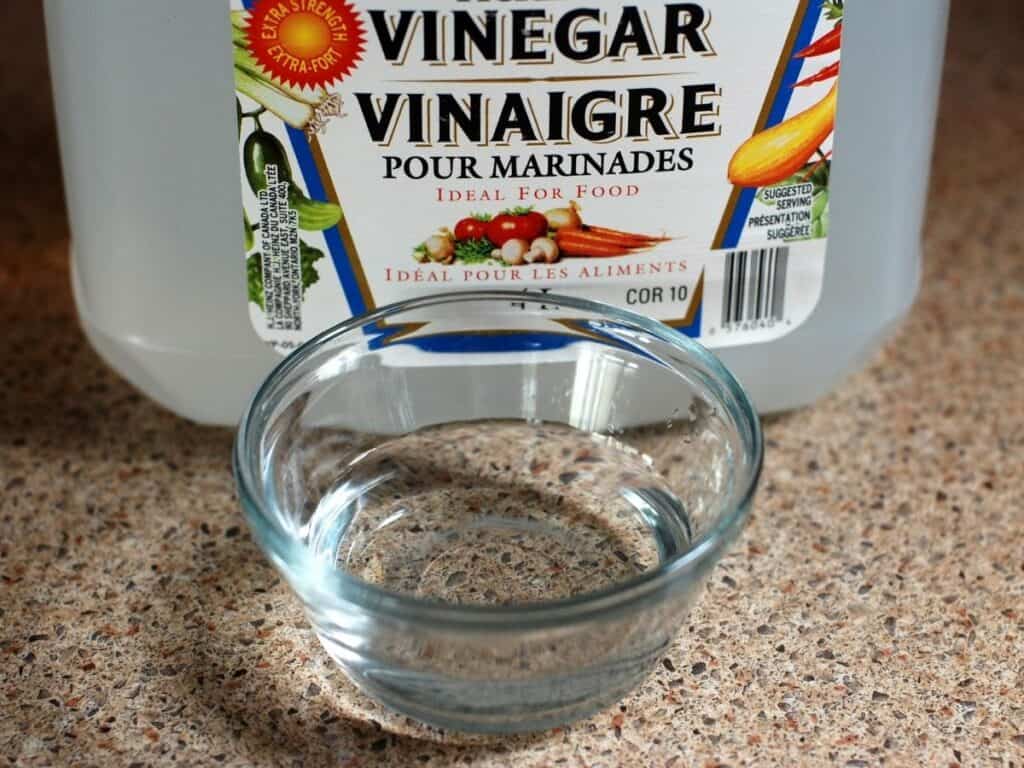
Vinegar is an acidic liquid with a low pH that hovers over 3. This high acidity makes it ideal for breaking down the proteins in the saliva. When combined with baking soda with its 9 pH, the chemical reaction is instant, albeit short-lived. However, during that short window of chemical euphoria, the mixture can break down the stains and remove them efficiently.
To give the solution extra power, you can also add some mild dish soap. Avoid hot water, which will only cook the drool and make it set. Always use cold water. You will need distilled white vinegar, baking soda, liquid soap or hand wash, a spray bottle, and a sponge or washcloth. Here’s how to do it.
- To prepare the vinegar solution, mix one teaspoon of dish soap and a quarter cup of distilled vinegar into one cup of cold water. Stir well in a bowl and fill the spray bottle with the solution.
- Spread the stained clothing on a table or a bench with the saliva stains facing up.
- Sprinkle a thin layer of baking soda on the stains.
- Spray the stains liberally to get them soaked with the cleaning solution. The chemical reaction will bubble up for a few seconds and then fade away.
- Let it sit for at least 15 minutes.
- Blot the excess vinegar and baking soda with a sponge or washcloth.
- Leave the wet stains to dry on their own and check if the stain has gone. Repeat steps 3 to 6 as necessary.
With Rubbing Alcohol
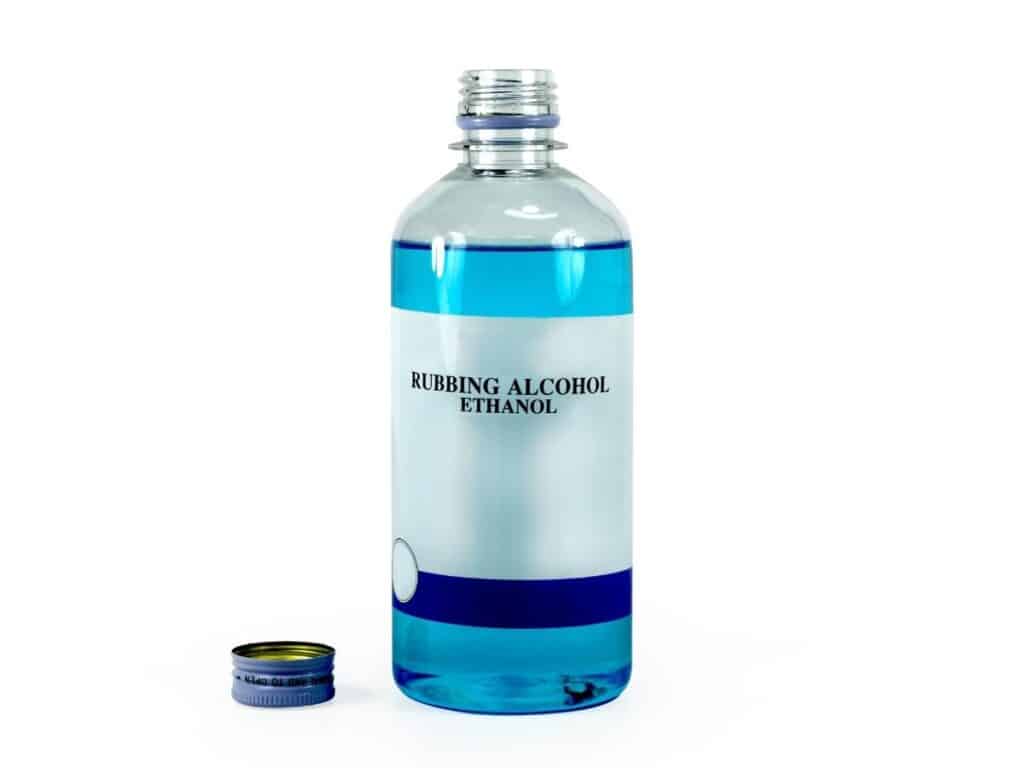
Not all clothes can handle the power of vinegar and baking soda. It’s more suitable for washable clothes (they have a W on the tag). But if the clothes are dry-cleaned only (they have S for solvent on the tag), then rubbing alcohol is a better option. Alcohol can break down the saliva stains without damaging the clothes. The same applies to upholstery made of microfibers or microsuedes.
The best rubbing alcohol for our purposes is the one with 70 percent isopropyl alcohol. Isopropyl alcohol is a colorless compound that goes into many household products such as hand sanitizers and disinfectants. Make sure the label on the bottle reads 70 percent alcohol content. If the isopropyl alcohol is less than 70 percent concentration, it will not work as effectively in removing the drool stains.
- Fill a spray bottle with the rubbing alcohol or use a clean sponge to apply the liquid.
- Make sure the stains are soaked with rubbing alcohol.
- Allow the alcohol between 5 to 10 minutes to break down the stain.
- Use a sponge to blot the excess alcohol and lift the stain off the fabric.
- If you’re dealing with microfiber or microsuede upholstery, then use a toothbrush to fluff the fabric and give it a natural look.
- For dried saliva stains, you might have to repeat Steps 1 to 4 a few times.
Delicate Fabrics
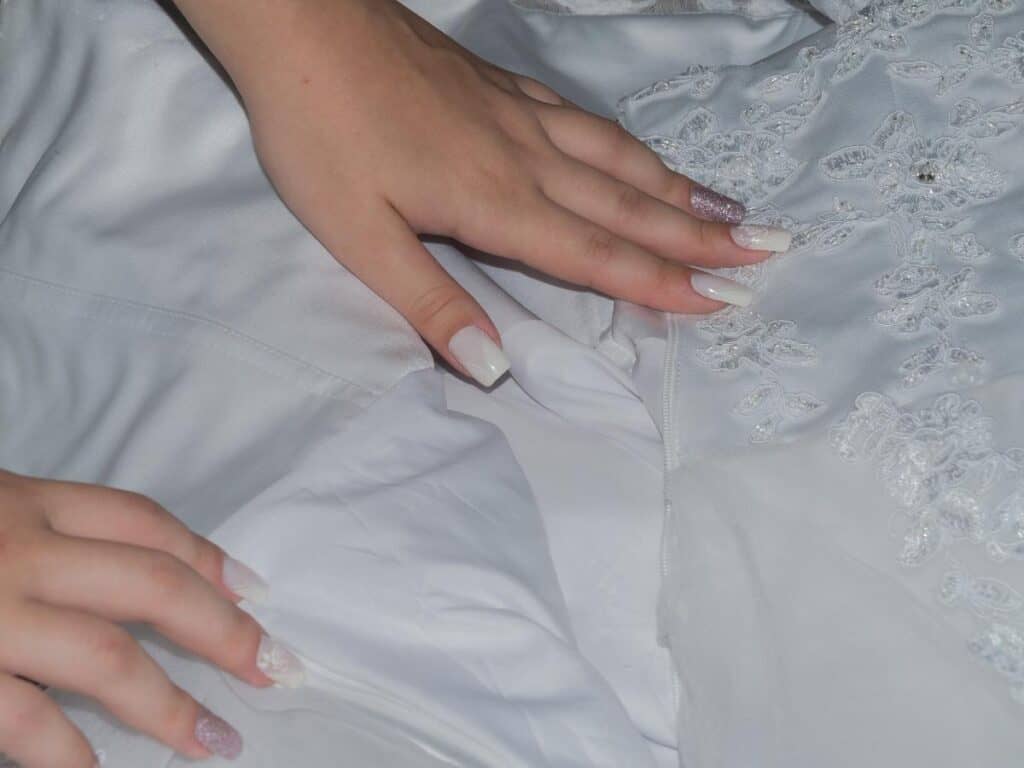
Delicate fabrics such as silk, suede, and velvet are easily damaged if you apply vinegar, water, or too much rubbing alcohol to remove the saliva stain. For such materials, you need to be as precise in your treatment as possible. Try to confine your application to just the stain itself without making contact with the fabric. Spraying the cleaning liquid is out of the question since you could damage the fabric.
Instead, you should use a clean washcloth or soft sponge to apply and wipe off the liquid. And you will need either rubbing alcohol or a combination of lemon juice and baking soda to break down the saliva stain and remove it without damaging the delicate fabrics. Here’s how to use each solution to remove drool stains from delicate fabrics.
Lemon and Baking Soda
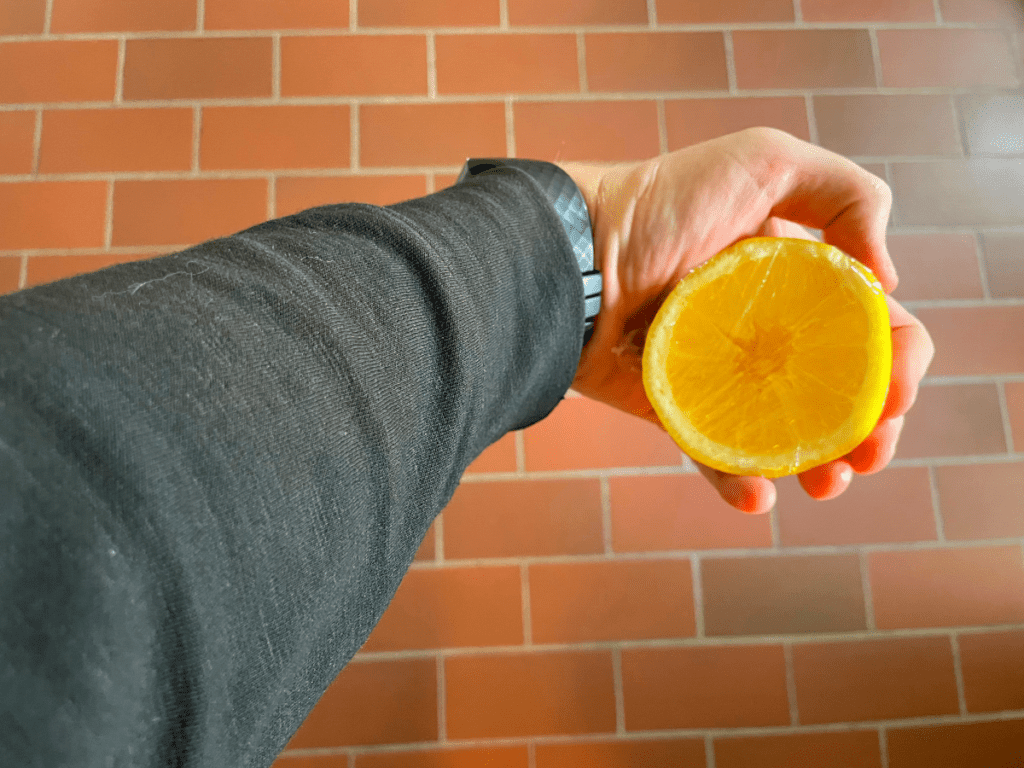
- Sprinkle a thin layer of baking soda on the stains. Remove any excess powder outside of the stain edges.
- Squeeze a lemon into a cup and use an eye dropper to apply a few drops of lemon juice to the stain. The baking soda will bubble up for a few seconds.
- Leave the cleaning compound for about 5 minutes as it breaks down the stain.
- Wipe off the stain and excess liquids with a sponge.
- Don’t try to rub or scrub the stain off with the sponge. That could spread the stain and damage the fabric.
- Let the wet stain dry naturally, then repeat Steps 1 to 4 as necessary.
Rubbing Alcohol
- Apply a few drops of the rubbing alcohol to a clean pad or washcloth. You’ll have a wet spot as wide as the saliva stain on the fabric.
- Place the wet spot on the washcloth on the stain directly and press gently.
- Leave the pad on the stain for 5 to 10 minutes while the alcohol interacts with the proteins in the stain.
- Lift the pad and wipe off the stain with a clean sponge.
- Repeat the above steps until the stain is fully removed.
How to Remove Drool Stains out of Pillows
Drool on pillows poses a more complex problem than saliva stains on clothes. While the pillow case can be easily removed and treated and then washed regularly, the pillow itself is a different matter. For one thing, the drool penetrates the stuffing of the pillow, which makes it harder for you to reach it, break it down, and extract it. Not to mention the cotton fabric that contains the stuffing.
Every time you have a pillow with drool stains, you have to deal with three different items. The pillowcase, the cotton fabric, and the pillow stuffing. For the pillowcase, you’ll need distilled vinegar, baking soda, cold water, a spray bottle, and sponges. To remove the drool stains from the pillow, you will need rubbing alcohol, laundry detergent designed for breaking protein stains such as sweat, and clean sponges and pads.
Pillowcase
- Remove the pillowcase and place it on a table with the stained side up.
- Sprinkle baking soda generously on the stained areas. Don’t worry if the powder spreads outside of the edges of the stains.
- Spray the baking soda with vinegar gently so as not to blow the powder away.
- Let the mixture bubble up and fizz, then give it 10 minutes to break down the stains.
- Wipe off the excess liquid and the stain debris with a sponge or a washcloth.
- Dry out the wet spot with a fan and examine the stain. If it’s still there, repeat Steps 2 to 5.
- Wash the pillowcase in cold water in a regular washing cycle.
Pillow Fabric
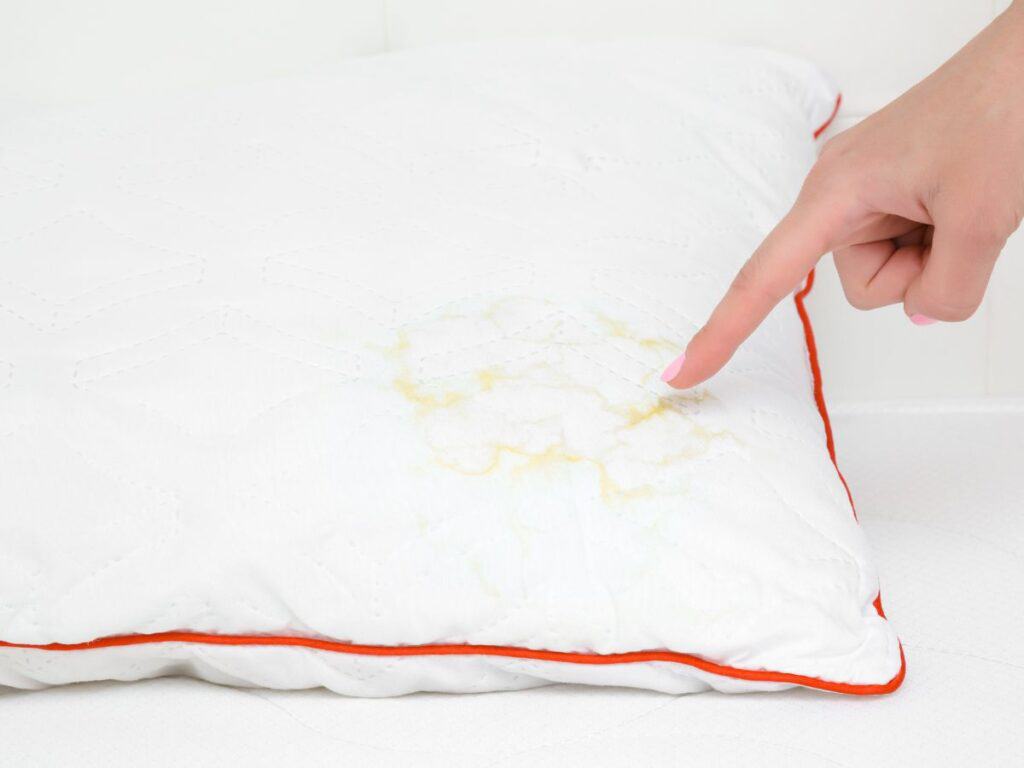
- Select a detergent for protein- and enzyme-based stains, such as Active Wear.
- Fill one teaspoon of the detergent and dilute it in a cup of cold water. Fill the spray bottle with the cleaning liquid.
- Spray the stain directly with the detergent. Make sure the stain is soaked with the liquid.
- Leave the stain for 30 minutes while the detergent breaks down the enzymes and proteins in the drool stain.
- Wipe off the stain with a washcloth. Repeat Steps 3 and 4 until the stain is removed.
Pillow
Treating the saliva stain on the pillow fabric should also work on the drool inside the stuffing of the pillow. However, even if the drool that the pillow has absorbed is already broken down, it’s still trapped. You need to wash the pillow to remove all traces of the protein-based stains. Depending on the type of pillow you have, you can toss it in the washer or send it to a professional to get it cleaned up.
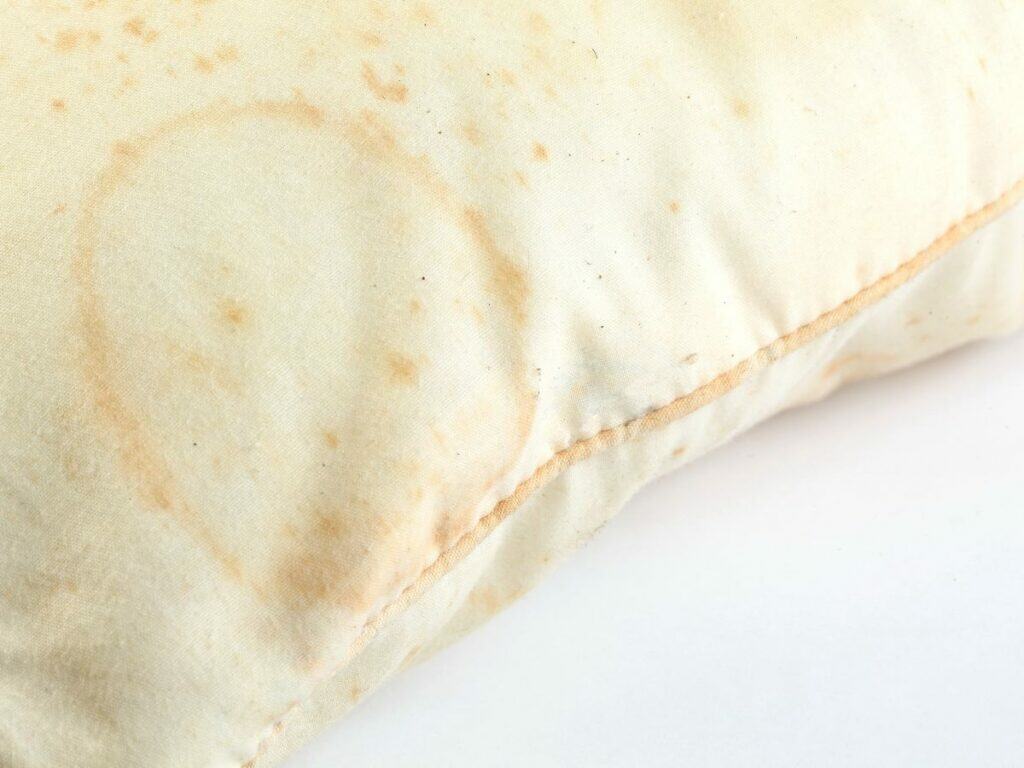
- Put the pillow inside the protective cover to protect it against snagging. If it doesn’t have a protective cover, stuff it inside of a pillowcase.
- Place the pillow in the washer and add a protein-based stain detergent in the amounts specified on the package.
- Add a half cup of baking soda to the detergent. You can sprinkle the baking soda all over the pillow.
- Set the washer to a gentle setting and run the washing cycle in cold water so that you don’t cook the drool stain.
- Before the rinse cycle, pour a cup of vinegar over the pillow with a special focus on the areas with the treated saliva stains. The vinegar will kill the germs inside the pillow and neutralize any bad odors.
- Place the pillow in the dryer and set it to low heat.
- Air the pillow in a well-ventilated area or an airing cupboard. Allow it anything from 2 to 3 days to fully dry; otherwise, it will develop mold and mildew.
How Often should you Wash Your Pillows?
Pillows don’t have to have saliva or sweat stains on them for you to consider washing them. While pillows are more tolerant of dirt than bedding, they still require washing or cleaning up every so often to prevent germ and mold build-up. Experts recommend that you wash your pillow once every 6 months. Of course, if you leave drool stains on the pillow, then you need it to wash more frequently than that.
Foam pillows are easy to wash at home (tap to check out my guide). You should check the tag on the pillow and follow the instructions carefully. As for down pillows, these cannot be washed in water. You should send them to the dry-clean laundromat to have them professionally cleaned.
When you should Replace your Pillow
Sooner or later, your pillow will become unhealthy to use. No matter how often you wash it, the stuffing becomes saturated with mold and germs. This can impact the quality of your sleep and could lead to respiratory diseases and infections. In general, you need to replace your pillow once every two years. A new pillow is fluffy and easy to clean.
Conclusion
Saliva stains leave bad smells and trigger mold build-up. You need to remove drool stains from clothes and pillows with vinegar, baking soda, and liquid soap. Always use cold water when washing off saliva stains to avoid cooking the enzymes in the stains, which makes them harder to get rid of.
Always use rubbing alcohol or a combination of lemon juice and baking soda on delicate fabrics such as silk and velvet. Wash the pillow in the washer after treating the saliva stain.
Here is how to keep your bed smelling great.

I’m an expert wardrobe organizer and a bit of a clean freak. I created this website and its YouTube channel to share practical guides about laundry and organizing. My teachings have been featured in multiple large news publications, and I’ve self-published two wardrobe organizing books and an entire course on the subject.

